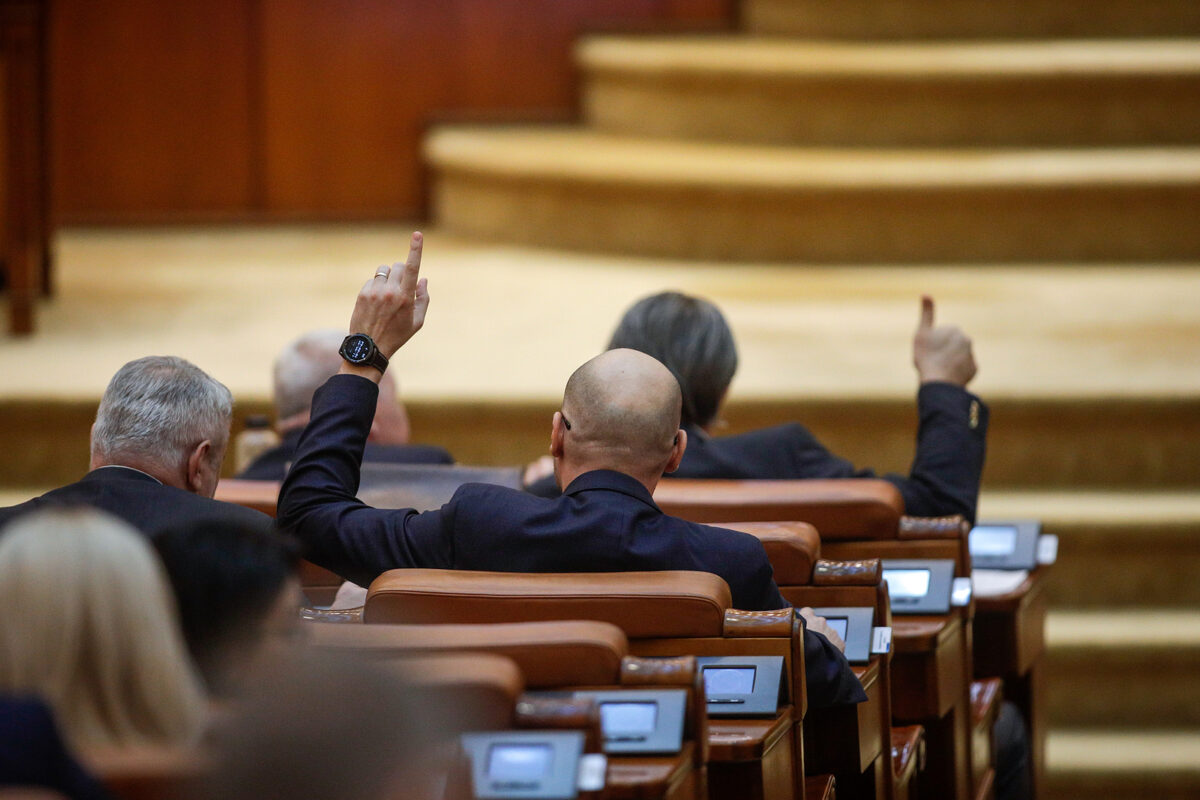For the Romanian political landscape, 2024 is gearing up to be an ‘all-in’ scenario, with all types of elections occurring just months apart and with the victor likely to secure a strong hold on power for the next four years.
Initially, the election outcome appeared easily predictable, with the two main political parties (which currently form the ruling coalition) choosing to run together in an alliance, similar to the German Grand Coalition model. However, recent developments leading up to the local elections on June 9 (which coincide with the European Parliament elections) hint towards possible frictions within the alliance.
Any analysis of Romania’s political scene needs to first take a look at the parties vying for power in what is an unusually busy year. Besides the local and European elections which take place this weekend, Romanians will also vote in September for a new president, and in December for a new parliament.
The Social Democrat party (PSD) is the leading member of the ruling alliance and the largest political party in Romania. PSD frequently prioritises the expansion of social programmes and the increase of public sector wages, making it popular among older and lower-income voters.
Representing the status quo with no radical agenda, voting for PSD is seen as a safe choice for Romanians who prefer more of the same.
The National Liberal party (PNL) is the junior partner within the governing alliance and the major centre-right political party in Romania. Historically, it has garnered support from entrepreneurs and middle-class voters by advocating for economic liberalisation, privatisation, and a reduced state role in the economy.
PNL has traditionally positioned itself as the primary adversary to PSD, but its current status as a junior partner to its former rival has left many traditional PNL supporters dissatisfied. As a result, the party now finds itself in an unfavourable position: voters content with the status quo may look at PSD as a better option, while those opposing the status quo may look towards opposition parties.
The United Right is a political alliance formed of three parties: Save Romania Union (USR), People’s Movement party (PMP), and Right Force (FD). This coalition appeals to middle and upper-middle-class voters, europhiles, college-educated individuals, and disenchanted PNL supporters.
The primary challenges faced by United Right, particularly USR, which is the largest party in the alliance, include internal divisions and leadership changes, as well as the party’s difficulty in attracting voters from rural areas and small towns.
The Alliance for the Union of Romanians (AUR) is a hardline nationalist party founded in 2019 that gained significant support during the Covid-19 pandemic by vehemently opposing government-imposed restrictions.
Since then, it has became a protest party that attracts a diverse spectrum of voters, including those dissatisfied with the government, nationalists, ultra-religious individuals, eurosceptics and reactionaries among others.
The party is rife with contradictions; for instance, the party condemns the Russian regime as criminal but simultaneously opposes providing aid to Ukraine and Ukrainian refugees. It presents itself as a traditionalist party while having the highest percentage of women on the electoral ballot (for the June 9 elections). The party strongly advocates for the unification of Romania with Moldova, yet its leader is banned from entering both Moldova and Ukraine.
AUR is also the most popular party among young voters, despite younger generations typically being more progressive. The party’s rapid rise reflects broader trends of increasing nationalism and populism in Europe.
SOS Romania a splinter faction comprising the most extreme elements of AUR, created around controveverial personality Diana Iovanovici Șoșoacă. The party is characterised by its far-right eurosceptic agenda. Unlike AUR, the SOS openly positions itself as pro-Russian and anti-NATO with its leadership frequently engaging with the Russian Embassy.
The party’s support was largely attracted by Diana Șoșoacă’s provocative and incendiary public acts, peaking at around seven per cent in early 2024. However, internal conflicts and public fatigue with her public stunts have led to a decline in support, falling below the electoral threshold of five per cent to approximately 4.5 per cent.
Election dynamics and geopolitical implications
The impact of the elections on Romania remains uncertain until the ballots are cast. However, having all elections within a single year presents a double-edged sword. On the one hand, it offers the advantage of stability within the country, a much needed factor when your eastern neighbour is being invaded by the Russian armed forces.
On the other hand, it has the potential of removing democratic safeguards against controversial decisions. The governing parties may feel emboldened to adopt unpopular or controversial measures without fear of immediate electoral repercussions, given that no elections will be held within the next four years. If the pressure is high enough, disgruntled citizens may resort to mass protests as their main remaining democratic tool left at their disposal, potentially undermining the stability that was initially sought.
In terms of Romania’s relationship with the European Union, it’s unlikely that we’ll see a radical departure from previous governments.
Even during the most eurosceptic period, under Liviu Dragnea’s leadership of PSD, Romania still played ball with the EU, albeit throwing a tantrum while doing so. In 2024, AUR positions itself as the primary representative of eurosceptics, yet with a softer brand of euroscepticism compared to other nationalist governments.
This is evidenced by AUR’s attempt to pursue membership of the European Conservatives and Reformists (ECR) group, led by Giorgia Meloni’s Brothers of Italy and the Polish Law and Justice party, rather than the more radical Identity and Democracy (ID) group, led by France’s Russian-aligned National Rally and Alternative for Germany.
There is little reason to expect Romania’s relationship with the EU to deviate significantly from the norm, suggesting it will likely continue as it has in the past.
Romania’s role on the EU’s and NATO’s Eastern Flank
Romania’s current president, Klaus Iohannis, would like a leading position within NATO or the EU after his second term ends this year (he cannot run for a third).
Earlier this year he nominated himself for the role of NATO general secretary but garnered little international support. This suggests that he may be leveraging the NATO consensus-based-process to negotiate a senior role within the EU.
What support there was for Iohannis came from an unlikely source—Hungarian Prime Minister Viktor Orbán, who announced that he was backing Iohannis while campaigning for the UDMR (the Romanian party for which most ethnic Hungarians vote). The outcome of this high-risk geopolitical manoeuvre remains uncertain, but maintaining a unified front at home will be beneficial to strengthening the country’s external policy objectives (such as full Schengen membership) and negotiating power on the international stage.
When it comes to aid for Ukraine, both the current governmental and presidential administrations have maintained a notably secretive approach. The Kiel Institute’s assessment places Romania as one of the least transparent countries in disclosing military aid data to Ukraine, with only Greece ranking lower. It has been revealed by the Ukranian government that Romania has sent 15 military aid packages.
While a new administration could potentially halt further military aid shipments and block the proposed transfer of a Patriot system, the impact may be limited. Given the prolonged conflict, the stock of weapons in Romanian depots available for transfer is likely low.
However, regardless of any changes in political leadership, Romania will continue to serve as a logistical hub for military aid to Ukraine. This includes hosting the largest NATO military base in Europe, expanding infrastructure to handle Ukrainian cargo, and providing training for Ukrainian F-16 pilots. These commitments cannot be overturned by a new administration and hold a much greater strategic value for Ukraine than any military aid shipment Romania could currently provide.
Furthermore, given that Mircea Geoană, NATO’s deputy secretary general and a strong supporter of Ukraine, is the leading candidate to take over from Iohannis (according to opinion polls), we should not be overly concerned in this respect.
Outcome uncertain
In conclusion, 2024 presents a pivotal moment for Romanian politics, marked by a convergence of all the elections and a potential shift in power dynamics.
Initially, the political landscape seemed predictable, with alliances forming along established lines. However, recent developments suggest underlying tensions within these alliances, hinting at a more uncertain outcome.
Encouragingly, extremist populist factions are waning in popularity, offering hope for a more stable political environment. It’s imperative for Romania to navigate these elections with a focus on strengthening democratic institutions and prioritising the welfare of its citizens.
This article was co-authored by Laurențiu Pleșca, a PhD candidate at Bucharest University and a senior policy researcher at the Black Sea Trust of the German Marshall Fund.







